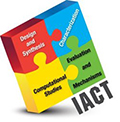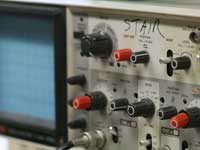IACT – Institute for Atom-efficient Chemical Transformations

Vision
The focus of IACT is to advance the science of catalysis for the efficient conversion of renewable energy resources into usable forms. IACT is a partnership among world-class scientists at Argonne National Laboratory, Northwestern University, University of Wisconsin-Madison, Purdue University, and Brookhaven National Laboratory. Using a multidisciplinary approach involving new catalyst synthesis, advanced characterization, catalytic experimentation, and computation, IACT addresses three catalytic conversions that are key to improving the efficiency for conversion of biomass to fuels: 1) selective removal of oxygen by dehydration, 2) selective hydrogenation of oxygen containing functional groups, and 3) C-C bond formation. The grand vision for IACT is to create a knowledge base for these key transformations that guides efficient deconstruction of biomass and enables highly selective conversion of the resulting oxygenated molecules to fuel components with minimum loss of the precious carbon that was fixed by photosynthesis to create the biomass. Thus, precise control of reaction pathways is our main mission.
To achieve this mission, IACT consists of four distinct, but intimately interlinked subtasks: synthesis, characterization, computation, and chemical and catalytic reaction science (see diagram on next page). The integration and interdependence of these subtasks follow naturally from the needs that each has for the others to answer basic scientific questions. This integration and interdependence are ensured by (i) an effective management structure, whose membership cuts across subtask expertise, and (ii) regular communication among participants via meetings, seminars, and collaborations.
Nanobowl Synthesis.
The goal of this project is to develop methods for fabricating nanobowl architectures that allow the positioning of catalytic and chemisorption surface sites with a resolution of 0.1 nm. We will create, characterize, model, and evaluate new, unconventional classes of catalysts bearing multiple active functionalities with precise organization. Three strategies are being explored: templated atomic layer deposition, silsesquioxane templated synthesis, and porous organic polymer synthesis. Through these efforts, we intend to create the catalyst sites at the heart of the IACT mission to realize catalysts which make and break specific C-O bonds. These catalysts are ultimately envisioned for large-scale, energy-efficient, and environmentally benign chemical transformations.
Selective Conversion of Furfural.
Furfural is an important intermediate in the conversion of hemi-cellulose to biofuels. A goal of this project is to gain an improved understanding of the factors that control the reactivity and selectivity of sugars and furan compounds in liquid solvents, such as water and ethanol (biomass conversion reaction conditions), and to make key connections to experimental results obtained by our team of collaborators. A second goal is to understand the factors controlling the activity, selectivity, and stability of metal catalysts for the hydrogenation of furfural to furfuryl alcohol. This project will employ state-of-the-art operando characterization and density functional theory to gain improved understanding of the reaction pathways.

